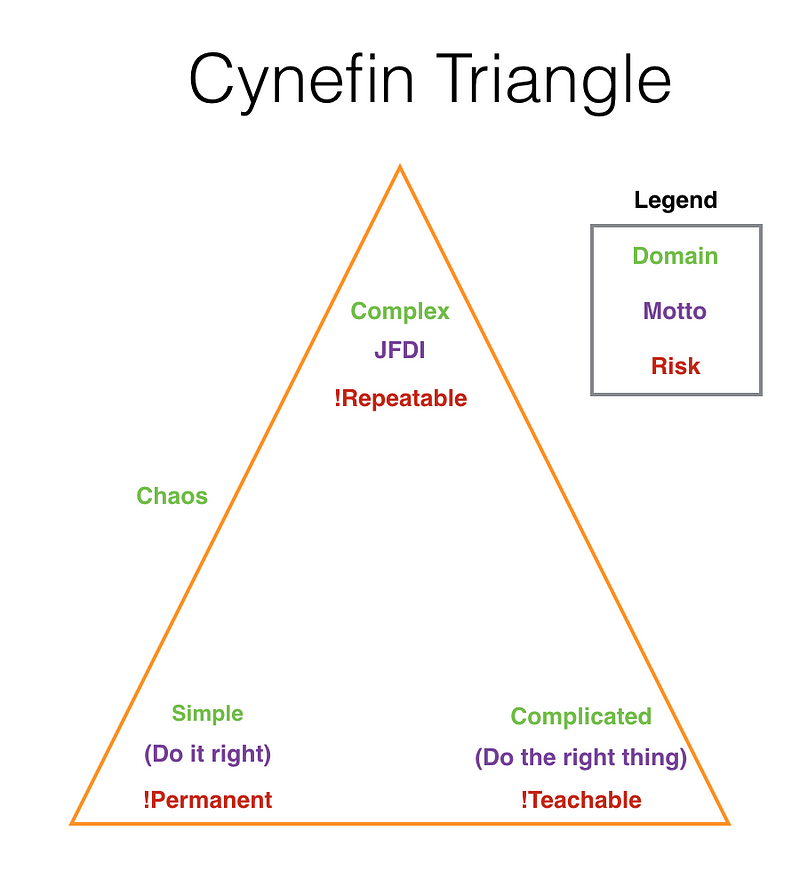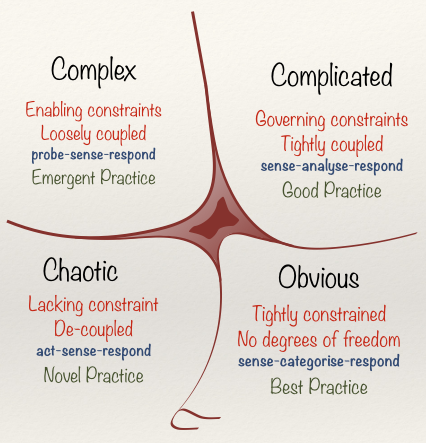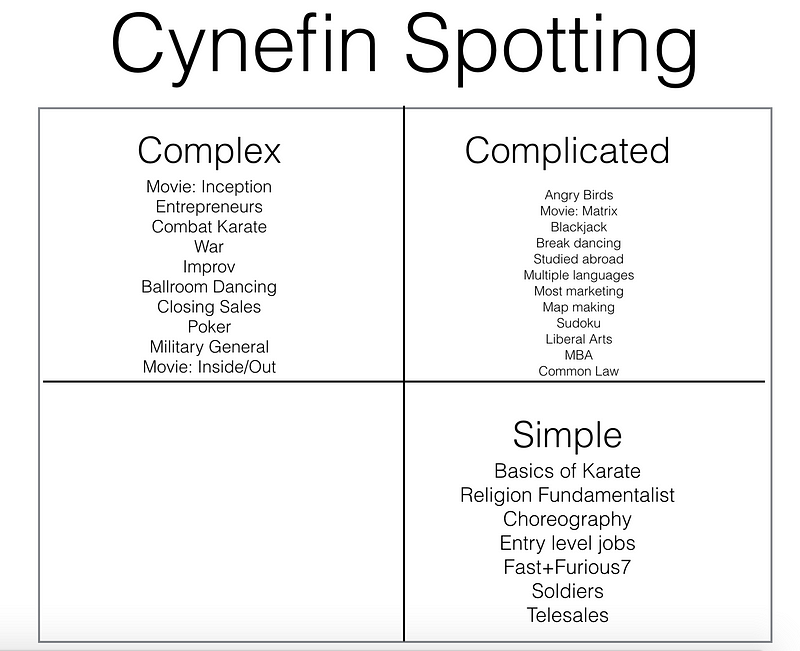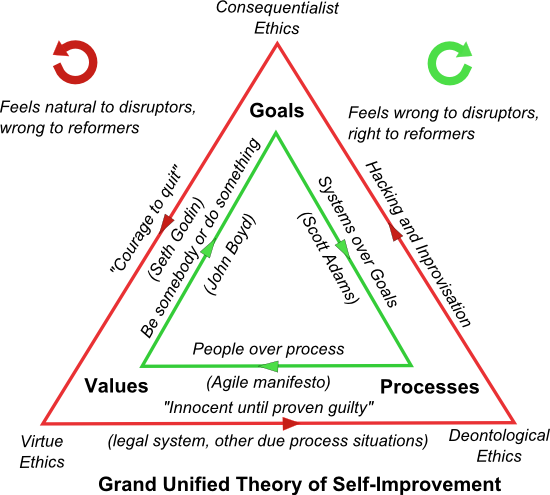The Cynefin Triangle
Two ideas kept repeating in my head until today they had idea sex. If you aren’t familiar with these concepts and don’t want to click…

Two ideas kept repeating in my head until today they had idea sex. If you aren’t familiar with these concepts and don’t want to click through this probably isn’t the essay for you. Stick around to discover why your SOPs fail, your startup can’t scale, and your consultants struggle to help.
The Cynefin Framework
In 1999 Dave Snowden started working on the Cynefin framework, which helps to frame the different problem areas and how to solve them.

If you want help spotting these in the wild here’s a document our team created to help train new employees on the different platforms.

Cynefin spotting matters because the different domains map to different orders of magnitude in value:
- Simple work generally sits at minimum wage, lets call it $10/hr
- Complicated work generally stabilizes around $100/hr
- Complex work is worth $1,000/hr or more
Note Chaotic doesn’t have many examples because it is actually quite rare, and usually the result of someone disrupting a simple process leading to chaos.
I’ve found this framework helps my thinking but it fails to adequately explain the movement. It assumes most problems stabilize in one place.
Venkat’s Triangle
Then in 2014 Venkatesh Rao created his Grand Unified Theory of Self-Improvement. His theory focuses on the movement between the stages of goals, processes, and values.

I recommend reading his detailed analysis, but his best prescription can be summarized by this quote:
Destroy like a consequentialist, create like a deontologist, resist temptation like a virtue ethicist. Or equivalently, analyze with goals, build with habits, decide what not do by emulating Great Men and Women.
What Rao captures here is the essential dynamism in systems. It turns out you actually need to move between these stages if you want to transcend plateaus.
Where his theory falls short is in explaining how to approach problems in every stage. Can we do better?
Cynefin Triangle
The Cynefin Triangle gets at this dynamism:

Typical reformers want to move clockwise, but they often leave their work in the simple domain, either fixating on getting others to follow SOPs perfectly or moving to new problems they can shepherd toward an SOP.
Typical disruptors want to move counter-clockwise, and this triangle explains why: the risk of staying in the simple domain is a slip into the chaos domain. The only prevention of this is to periodically disrupt your own processes, breaking things others feel are solved to keep the system refreshed.
Many startup problems move this way:
- Sales process starts in complex, but as companies scale they implement CRM and every tip from Predictable Revenue, even if it no longer applies to their market. Companies can only protect themselves by periodically doing new customer development and staying in touch with the methods that got them their first customers.
- Marketing starts in complex with product development, but companies look to scale by simplifying it down to a monthly newsletter and best practices, following the work of everyone else in the market. If they don’t hire someone to try new things, they eventually find themselves quietly disrupted by new realities (such as emails no longer reaching the inbox)
In short, you have to move clockwise to scale, but you should only move as clockwise as you must, and no further.